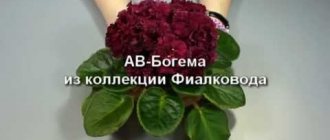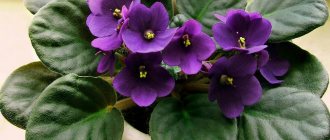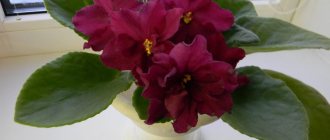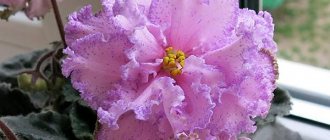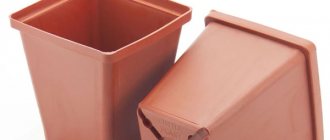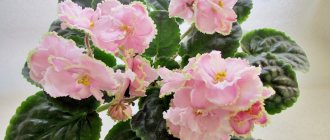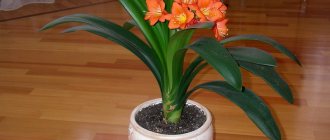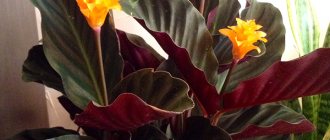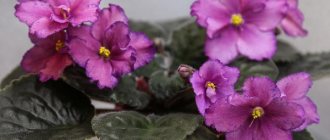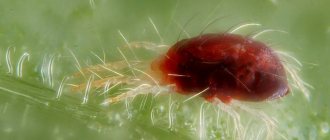Just 130 years ago, lovers of indoor plants did not know about the existence of Uzambara violet , but now this tropical beauty is considered one of the most important representatives of potted culture.
All over the world, many schools and communities have been formed to study, cultivate and disseminate it, and
world-famous
breeders are engaged in Saintpaulia was able to so quickly become indispensable in amateur collections due to its excellent characteristics, among which we can especially note :
- Unpretentiousness regarding living conditions;
- Compact dimensions;
- Ease of care regimen;
- An innumerable selection of varieties;
- And unsurpassed decorative qualities.
Russian flower growers became acquainted with the Uzambara violet with a significant delay - only in the second half of the last century the first specimens of this exotic guest began to appear in the main Botanical Gardens of the country, and only then - on the windowsills of ordinary flower growers.
But the little time that Saintpaulia is known in our country was used very fruitfully by violet growers :
- They created a domestic selection school with a special style;
- We trained masters in breeding varieties with big names;
- We received many unique varietal lines;
- And they constantly participated in various exhibitions.
ATTENTION! Among the varieties of domestic masters, suitable for the collections of not only experienced flower growers, but also novice violet lovers, there is one that is distinguished by its original coloring of flowers with bright prints.
violet "EK-Bullfight"
Characteristics table
| Bred by: | Korshunova E |
| Socket size: | standard |
| Description of the socket: | bright green, exhibition |
| Flower size: | especially large-flowered (8 cm) |
| Flower type: | semi-double and terry |
| Flower Shape: | star |
| Flower color: | Blood red flowers with notches |
Violet EK-Siberian Princess (E. Korshunova)
Systematic position
Order : Clear-flowered (Lamiáles).
Family : Gesneriaceae.
Genus : Hybrid Saintpaulia (Saintpaulia hybrida).
Photo and description of the variety
The EK variety Sibirskaya Tsarevna is distinguished by very large semi-double flowers of a dark red color.
Leaf blade:
- Dark green color;
- Elongated;
- And pointed.
Petioles:
- Dark;
- Fleshy;
- With a burgundy tint.
- Brittle and long.
The result is a large, sweeping rosette .
The Siberian Princess blooms with semi-double wavy flowers up to 5 cm in diameter. The first flowers are the largest , the subsequent ones are smaller. The color of the petals is very bright and rich.
Important! Each peduncle bears one or two flowers.
The peduncles are somewhat elongated , it is difficult for them to bear more than two large flowers, therefore they are prone to sagging.
Description
There are many different varieties bred in the world, all of them are beautiful in their own way, but the “Bullfight” variety always attracts the attention of violet lovers.
History of the variety
This species of violet was bred in Togliatti by breeder Elena Korshunova; as a result, in catalogs or bulleted lists the abbreviation EK is added to the name, hence the correct name of the variety EK – Bullfight.
Leaves
The leaf blades of the variety grow in a full and dense rosette of large size. With proper care, it can reach a diameter of 30 cm.
The leaf blades are light emerald in color and have long petioles and a slightly wavy, not clearly defined wavy edge.
Flowers
The flowers are red in color and quite large. When fully bloomed, the bud is literally filled with large petals, slightly wavy along the edge.
Depending on the brightness of the lighting, Saintpaulia may slightly change the shade of its colors:
- From bright scarlet color;
- Until ruby.
The flowers, regardless of the number on the bush, do not become smaller , but grow with the same large diameter up to 8 cm.
Features and differences
The flowers are the largest among flowers that bloom in a deep red color; their diameter is 8 cm. The main distinguishing feature of this violet is that it blooms constantly. At first, 3 buds bloom on two peduncles, and then more peduncles grow and large flowers are constantly formed on the rosette, creating a magnificent head of flowers.
Blooming of new items in my collection: EK-Boy Bykov gold, Heinz's Reminishing, LE-Odalisque, etc.
Good day, dear like-minded people! So winter has brought the winter cold to us, and there are entire gardens on the flower shelves. First I want to congratulate everyone
and wish you peace and spiritual grace. Today I will show you another batch of my new products. I'll start with EK-Boy Bykov gold. Its namesake EK-Boy Bykov, for all its merits, left me indifferent: the rosette is too big, the peduncles are long, and it looks like many red-flowered ones. But when I saw this variety in Elena Lebetskaya’s exhibition last year, I simply fell in love. And the purchased leaf met the best expectations: the babies appeared quickly, grew together, and the first flower stalks appeared within a year.
The first flower opened very bright
Before the next flowers opened, it grew to almost 7 cm and faded only a little, but lasted almost 3 weeks.
The rosette began to throw out flower stalks on the top shelf, but due to overexposure the center was slightly off, and I had to move the rosette down under the “flora”, it liked it there and the flower stalks stopped drooping. Not all varieties like the “flora” variety, but red-flowered ones thrive there.
The bouquet turned out slender and began to live up to its name.
What else captivated me about this variety was the perfectly round rosette, which was formed without any effort on my part, and its size is only 23 cm. In addition, crown variegation appears from a very early age and does not disappear with changes in temperature and lighting.
I also bought the Heinz's Reminishing variety in leaves from Elena Lebetskaya, only the year before last. Last year’s rosette did not survive the winter on a cold window and “rested in the bose,” but its descendant bloomed safely on my shelf, and then moved to the window.
Last year, thrips also walked around the window, maybe this also influenced the formation of the rosette: the peduncles were very bent, and the flowers themselves were of different shapes and did not want to open completely.
This “moth” hung there for almost a month, and then the outlet simply died from overflow.
Her descendant had flowers of the correct shape, although not as bright, since the buds were placed on a rack. I was very pleased with their size and long flowering time: 6 cm flowers lasted in a slender bouquet for more than a month
After I removed them, not even 3 weeks passed before new flower stalks appeared. The rosette of this miracle is also a very “soulful” size - about 23 cm and also of an ideal shape. The variegation is brighter when mature and cool.
Another variegated beauty came to me in the summer as a baby from Natasha Shalamova, less than six months later she bloomed amicably. The bouquet would have been a little larger, but one peduncle broke off along with a leaf, which I rooted as soon as the first peduncle appeared. LE-Odalisque:
Its rosette is also compact, but already more than 25 cm, formed almost perfectly, considering that some of the leaves were sent to order
The color is not for everyone, but there is something touching in these flowers
The first signs of aging appeared 2 weeks after the flower opened. And although there are many that are somewhat similar, this variety definitely remains in the collection.
Another Lebetskaya variety came to me last year in the spring as a tiny baby, it grew slowly, and it was also planted in poor soil, so it only bloomed in winter. LE-Lilac Tenderness
The rosette of this young lady is very large, more than 30 cm, the leaves are on long stalks
But the large 6 cm, heavily double flowers also turned out to be long-lasting, each lasting more than a month. Now the rosette requires an urgent transplant, I hope in the spring I will be able to show it in all its glory.
I also grew the Rose Gardens half mini trailer from leaf.
I planted 2 rosettes in a tall pot with plenty of drainage to get a real rose garden.
Interestingly, the children from the leaf purchased at the exhibition appeared immediately with flower stalks
Just for fun, I planted them without removing the peduncles; subsequently, 2 rosettes bloomed 2 months after transplantation, and 2 dried out the peduncles and began to grow on their own.
the peduncles are very long and thin, bending under the weight of many semi-double semi-bells
This variety is not for everyone, but it looks good in a tall vase and attracted everyone’s attention at the Kyiv exhibition.
I showed the small standard Spring Promice in the last article, today I’ll talk about it in more detail, because this beauty is worth it.
The variety is very prolific and early ripening, blooming within 7-8 months from planting the cuttings. From one leaf rosettes of different shapes can appear - the leaves can be heart-shaped, as in the 1st photo, and elongated, as in the second.
The flowers do not differ in shape, but the peduncles of the long-leaf rosette turned out to be stronger and immediately formed into a dense bouquet.
Rosettes with a different leaf shape scattered flower stalks in all directions, forming a whole flower bed barely exceeding 20 cm in diameter.
Another small standard, the Ajohns Spinning Bells also captivates at first sight.
The flowers are very unusual and delicate in color.
The only pity is that they fall off quickly - within 5-7 days after opening.
But this beauty blooms almost continuously and profusely, and the ideal rosette is no more than 18 cm.
Another charming drop - Agnetta
This rosette was born already with a peduncle. I let it bloom at the mother leaf, after both flowers fell, I transplanted the baby into a pot.
Less than 3 months later it bloomed again, but the summer bloom was very different from the first.
The rosette tried to bloom all summer, and by autumn the flowers again grew as expected for the variety. They last up to 2 weeks each, so you can forgive a small flaw. And the socket is also very modest in size, no longer than 25 cm.
I had to start the School Bells miniature again; from the first batch I accidentally sold all the kids, leaving none for myself, but now, finally, it makes me happy.
The color was accurately conveyed - this is what she is - deep blue
Bells also fall off and last for about a week, but their abundance makes up for this drawback.
The rosette is very small, no more than 10 cm, and blooms frequently.
Another Hainz's Little Nugget came to me this summer as a baby from Tatyana Lysikova, bloomed exactly according to the variety and so luxuriously!
While the bouquet was growing, I ran around with it almost every other day and took photographs; this color is difficult to convey with a camera, but it seems that it turned out without distortion.
This miracle left the exhibition in good hands, and now I will grow it again from a leaf.
Another baby, Optimara Little Moonstone, also grew from a leaf and bloomed just 8 months after planting the cutting. I read about the capriciousness of this variety, but for me it behaves perfectly and has no capriciousness.
The rosette has very few leaves, there were 4 stepsons, I planted them and they took root perfectly, and the little one immediately began to bloom and very amicably. The flowers are small, but there are so many of them and they are so expressive!
That's all for now, thanks for your attention.
Growing conditions
In order for a flower to develop well, it is necessary to take into account its wishes regarding its cultivation, that is, fulfill some requirements for caring for it:
- The container for violets is not high, but wide, with a volume of no more than a liter.
- Replanting is done annually in the spring with inspection of the plant’s root system and replacement of the soil.
- Where the violet lives there should be no cold drafts.
- The temperature regime for normal violet growth should be within 18-25 degrees Celsius.
Features of violet care Frosty cherry at home
The well-being and appearance of violets depend on the grower’s ability to provide their needs for watering, lighting and nutrition. Under optimal conditions, violets bloom for nine months of the year.
Temperature
Violet Fairy - description and characteristics of the variety
The violet can tolerate short-term temperature drops of up to 12 °C, but it needs warmth for normal development. The plant feels comfortable if the thermometer shows 20-22 degrees Celsius.
Sharp temperature fluctuations are contraindicated for the flower.
Lighting
Windows facing east or west are most suitable for placing violets. To get an even rosette, the flower is periodically turned. If Saintpaulia is placed far from the window, it is provided with additional lighting.
Important! Correctly selected lighting is the key to abundant flowering of violets.
With a lack of lighting, leaf cuttings stretch and rise, and the color of leaves and flowers loses saturation and brightness. Direct sunlight can cause burns on the leaves, so the plant should be shaded from excessively bright light.
Watering
You can provide violets with moisture in different ways: use wick watering, water in a tray or from above.
Wick watering will help the gardener save time. In this case, a string is placed in the pot, passing it through the drainage hole. The part of the wick that comes out is lowered into a container of water.
Violet on wick watering
When using the “bottom watering” method, water is poured into the pan for 20 minutes, then the excess is drained. Most often, this method is used in greenhouses for the mass cultivation of Saintpaulias, but it can also be used in indoor floriculture.
Most often, ordinary people water homemade violets from above, carefully moistening the earthen ball. In this case, certain rules must be observed:
- Water if the surface of the soil in the flower pot is dry. At different times of the year, the frequency of watering differs. In winter, you can moisten the plant 2-3 times a week, and in summer this procedure is carried out daily.
- It is advisable to use settled water at room temperature.
- Moisten the plant evenly, trying not to create stagnation of moisture and not leave dry areas.
- Excess water is drained from the pan after a quarter of an hour.
Humidity
The most suitable humidity for growing Saintpaulias is 50%. In a drier atmosphere, the flowers will be slightly smaller and the leaves denser.
The critical time for Frosty Cherry is the heating season, especially if the flower is located near radiators. Streams of hot air negatively affect the plant, its leaves begin to turn yellow.
Attention! Violets, like other flowers with pubescent leaves, do not like spraying. Therefore, when growing these flowers, other methods of increasing humidity are used.
To humidify the air, plants are placed in a tray with damp expanded clay or moss, or containers filled with water are placed next to the pots.
The presence of a humidifier or air washer in the apartment completely removes the problem of achieving the required humidity.
Priming
The delicate roots of violets are very sensitive to soil. Therefore, when choosing a substrate, you need to remember that it must be loose and nutritious. When preparing a soil mixture, violet growers often use peat and agroperlite with the addition of crushed moss. Peat (or light garden soil) is a filler. Perlite (like vermiculite, sphagnum, sand) acts as a leavening agent, providing good moisture retention and breathability. You can also add nutritious compost soil or humus.
Soil for violets
As for the exact proportions, there are many recipes. For example, in the book of the famous breeder Boris Mikhailovich Makuni there is such a description:
- high-fiber coarse-fiber peat - 2 parts;
- sphagnum moss and turf soil - one part each;
- river sand - 0.5.
Attention! When independently preparing soil for violets, it must be sterilized.
To do this, you can spill the soil with boiling water or a strong solution of potassium permanganate. Sometimes the soil mixture is frozen, which also helps get rid of harmful insects.
Flower growers who do not have a lot of time use commercially sterilized components or ready-made mixtures for Saintpaulias.
Feeding
Violet cherry, like other plants that are in a limited volume of substrate, needs regular feeding. However, it should be noted that too concentrated solutions are harmful to plants. Violets tolerate a lack of fertilizer better than an excess. For Saintpaulia, the optimal solution is considered to be a solution in a concentration of 1 g of complex mineral salts per 1 liter of water. This feeding is carried out once every 2-3 weeks.
In addition, excess potassium leads to stunting of growth, and excess nitrogen, on the contrary, promotes the growth of green mass to the detriment of flowering. Therefore, nitrogen fertilizers are suitable for children, and phosphorus fertilizers are chosen for plants with buds.
Typically, complex fertilizers with a low nitrogen content are used for violets. It is useful to alternate mineral and organic fertilizers. After transplanting into fresh soil, no fertilizer is applied for two weeks. During the dormant period, the plant is also not fertilized.
For reference! Peters fertilizers give good results. This manufacturer offers different formulas for the flowering and growth of violets.
The use of Osmocote long-acting fertilizers saves time and gives a visible effect. The granules are placed in a pot during transplantation and over several months, under the influence of water, microelements are released and nourish the plants.
Planting and propagation
Violets are propagated in three ways:
- Using a daughter socket;
- Using a sheet;
- Using seeds.
The last method is used only by breeders and is practically not available to ordinary flower lovers.
To obtain daughter rosettes, the old violet is cut off and rooted, but the stump that remains after the cut is not removed. Daughter rosettes appear on it, which are later re-rooted into separate small pots.
Leaf propagation occurs in the standard way:
- Cut off the leaf.
- Immerse 2 cm into the soil and lightly squeeze the soil around the cutting.
- Cover with a glass jar and water lightly if the soil is dry.
Features of flowering, growth and reproduction
In order for the Princess to bloom profusely and for a long time, she needs :
- 12 hours of light;
- And 6 hours of complete darkness.
A variety with dark leaves requires diffuse lighting .
How long does it take to grow an adult plant?
An adult plant EK Siberian princess will grow at :
- Favorable conditions;
- And proper care for 10-13 months.
Reproduction methods and features
- We cut a healthy, beautiful leaf from the second row of the plant;
- We cut the cuttings at an angle;
Most often, violets are propagated by leaves. - Choose a pot with a diameter of up to 6 cm;
- We root the cuttings into the ground;
- Cover with a greenhouse;
- The baby will arrive in a couple of weeks.
Leaf cuttings can be rooted in boiled water and then transplanted into the ground.
Features of flowering in hot and cool conditions
In the heat, unpainted spots appear on the petals. Flowers in the following conditions :
- Burn out;
- They fade.
Peduncles become:
- Weak;
- And they droop.
What do flower stalks look like?
Peduncles are long, dark in color . Under artificial lighting conditions, they become thin and weak, unable to bear huge flowers. When kept in natural light, they become stronger and shorter and do not lie down under the weight of flowers.
Is it possible to achieve cap flowering?
Each peduncle of the Siberian Princess bears 1-2 flowers , but there are a lot of peduncles. This results in so-called bouquet flowering.
With proper care, you can achieve cap flowering.
Bud lifespan
After the bud opens, each flower pleases the world for about 6-8 days.
Violet EK Spring Watercolor
This gorgeous variety is another success in the field of creating new varieties of Uzambara violets by a breeder from Togliatti, Elena Vasilyevna Korshunova . Saintpaulia was presented for sale in 2005. Below you can see a photo of violets Spring watercolor.
Description of the variety
Saintpaulia is characterized by the independent formation of a compact, small-sized leaf rosette , which can be described as a standard type. The bush has a leveled contour, a symmetrical configuration and a high degree of fullness. This is a correct example of a show rosette.
Not very large in size, elongated - heart-shaped leaf plates are distinguished by shades of lush greenery with a salad venation pattern, rounded - notched serration and a wavy configuration of the lateral edge, as well as a smooth, matte surface structure.
Violet produces a very long flowering of the cap type with the formation of a huge number of buds of medium diameter. Strong peduncles easily support a significant mass of flowers in an erect position, preventing them from scattering over the leaves of the rosette.
Saintpaulia corollas with double and semi-double degrees of fullness acquire additional volume due to the wavy structure of the tips of the petals and the abundant fringed edging. The main tone of the flowers is maintained in the tints of pink , shaded by a purple-crimson coating along the edge of the petals and a light green fringe color with golden sparkles.
Sports
Saintpaulia can quite often form sports:
- with a darker color of the main pink background and spraying along the edges;
- with a predominance of greenish color and an increase in the volume of fringe.
Features of maintenance and care
Saintpaulia is an almost problem-free plant to keep in indoor collections for both experienced gardeners and novice lovers of tropical beauties:
- the variety itself forms a leaf rosette that has exhibition characteristics;
- does not require special conditions of detention, but adapts to the proposed microclimate ;
- blooms for long periods of time with chic caps.
ADVICE! Violet prefers natural light with a diffuse spectrum, so it is better to place it on windowsills in an eastern or western direction. This will have a beneficial effect on the growth phase of the rosette - it will form compact dimensions, the formation of short and strong peduncles, and will also help the plant to lay a large number of buds.
The variety has one negative feature - shredding of the corollas as the number of flowering increases. Bush rejuvenation can help with this.
Reviews
Svetlana Eduardovna. “I love the variety “EK Spring Watercolor”: double delicate flowers with a dark pink border, over which flows a greenish-golden snake of fringe - and all this against the backdrop of a magnificent rosette of a juicy shade of green. For me, a big plus is the violet’s ability to independently form its own rosette. Well, I don’t like all the problems associated with the formation of a decorative bush. That’s why I buy independent specimens for my collection.”
Valentin Mikhailovich. “I would like to give advice to beginning violet growers who intend to purchase the “EK Spring Watercolor” variety for their collection. To preserve the decorative appearance of the bush and form a neat rosette, strong flower stalks and many buds, place a flowerpot with violets on the windowsill. The variety loves daylight."
